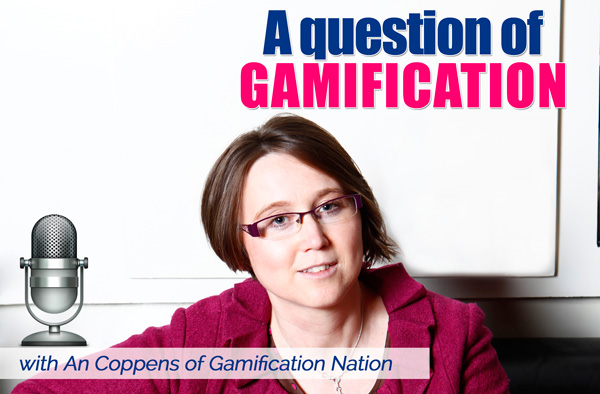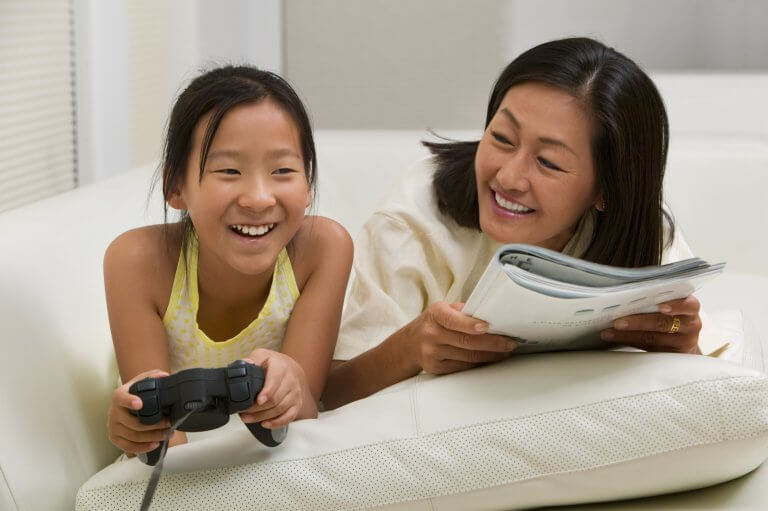Welcome to a Question of Gamification. This is An Coppens. I’m your show host and also the CEO of Gamification Nation. This week’s question of the week is, “How can you keep your gamification design or your game design fresh?
It’s a question we’ve had several times. It’s a question I also ask my clients, how are they going to keep people engaged over the long haul? Sometimes we build gamification campaigns that are short, snappy and just for 45 days, a season, a launch, something like that. In that case, the longevity is not necessarily a question, but a lot of the times we’re asked to build a gamification design for let’s say a learning portal, for a marketing year of. For a product that needs to attract new people all of the time. Now the hint is in it, I suppose in some sense, and it always made sense in my mind, but when I say it to people, especially in the operational side of a business, I usually get greeted with, “Oh, that’s how you do it”, kind of response.
So if you’re in learning, if you’re in HR, if you’re in anything employee facing, you’ve got to think like a marketeer. You’ve got to think like the seasons of fashion, the seasons of nature in effect, because most of the time your business, if it’s like any bit like ours, it has cyclical moves, some periods are really busy, other periods they may go a bit quieter. And how you motivate your people in the up days and in the low days are slightly different so they should be. Now in periods like January, we’ve done campaigns for telecoms organisation to beat the January blues, for example. In another company we’ve built in four seasons into their learning portal and each season brought new quests, new challenges, new interesting things to explore. So you give the impression there’s always something to aim for.
Now in recruitment, it’s probably not the same role that’s open all of the time. So varying that so that your message changes to the marketplace because people looking at your company will also look at is there variation? Is it the same all the time? So one thing that we took away from that is that a lot of companies don’t think about that at the outset of, you know, Oh, I want to do gamification, or Oh, I’m going to play a game. We’re going to need a game for X purpose. And then they don’t think any further. So what’s after the first rollout? So we make them, we asked them to think about that and say, okay, so that’s great, you’re going to invest X amount of money into building this new way of doing it, motivational way of encouraging your learners to come into your learning portal.
What are you going to do to, to make it sticky, to make them come back? No, in last week’s call or last week’s podcast, I spoke about building habits. Habits are a good thing, but again, if you know yourself, and if you’re any bit like me, you have good habits and bad habits and one of my bad habits is that I stop and start an awful lot of things and I may not always finish everything. Like, for example, you know, I have these great intentions of losing weight and I’m still working on it and I keep stopping and starting the whole chain of losing weights, eating right, exercising more, and drinking more water. So yeah, so it’s, it’s a constant reminder of good habits and we don’t always keep the good ones up forever. So we have to make sure that in any game design, but also any gamification design that we build in for those moments where people are just not sticking to what they said they were going to do.
I mean, think about your new year’s resolution. It’s, you know, something that most of us do in the beginning of the year and usually three weeks in they’re all down some dark hole over your memory and you’ve forgotten all about it. Or if you’re good, you’re still going. Give it another three weeks and maybe it starts to ease off a little. So you know, habits are good thing, but again, on their own, just having game mechanics stimulates positive reinforcements and habits, they will help, but they will not be the thing that keeps them going all the time. The key trick is to build in a social elements, so social kudos or social accountability is what tends to keep people moving for a lot longer, tends to keep people focused because there’s somebody else looking. It’s amazing what we do for other people that we don’t do for ourselves.
If somebody else checks up on my work and I know they’re checking and they’re asking questions, then I know that I’ve got to deliver on my promise. If nobody’s checking, I could get weeks with saying, Oh yeah, I’ll get around to that. I’ll get around to that and eventually I typically do, but it might not be straight away as and when it should have happened and that’s I think the nature of the human psyche in some way. Of course, there are always people that are just really good at getting things done and there’s others that you know probably don’t, so you need to help dose people with linking accountability, linking social pressure, having some mechanic in your gamification design or in your game that encouraged them to team up with one or more people so that you can group together and encourage another forward.
The other thing to do is to keep your game on your design fresh. Why is it that games often release either a sequel or an extension pack? Exactly for that reason because they know that over time if you’ve played it a few times that things get boring. So new boosters co me in, new challenges or quests come in new areas unlock themselves. Now when I look at learning design and learning portals in organizations gives us my original background. The amount of new stuff that came out on a year to year basis was typically quite limited. You try to dress up old stuff in new packaging. Most of the time to request from managers also was for all, yet they need more of this or more of that. There were very few managers that actually in the corporate sector, even as an internal trainer and L&D manager sat us down and said, okay, here’s my objectives on how you’re going to make those happen this year.
Now in one of the last organizations that I worked in as a training lead, I did that for some of our accounts and they had amazing results to the extent that then I got asked, well, whatever you did the last time, you now need to undo it because it stuck. So which, which I thought was great compliments for something that worked. But if we’re thinking about internal employee facing, a lot of employees go to work, face the same thing, do the same thing every day. And that’s not because they’re bored with the job, but that’s just the nature of the work. It may vary from one day to another to deal with different people, different clients, but their daily habits may not change a vast amount. You’ll find a sit in the same place, they eat with the same people, they’ll Culkin around the same time, take your same route to work.
So there is daily habits and daily grind that happens in order to jazz it up. is to do something new. Do something different in your gamification and in your game designs, you can do that. You can tease them into trying something new, maybe place the best on their performance. How well are they going to do today? Can they beat their best? And you know, if you have habit building streaks, yes you can use them, but they were out. You want new stuff. And I would say is, think of it like fashion designers do. Think of it like advertising managers do. Every season has different campaigns. So we’ve just ramping up towards Thanksgiving in the US we’re or we just even finished Thanksgiving and I think in the U S we are heading for Christmas and a news years in many parts of the world.
Chinese Christmas, Valentines day, Easter, you know, you name it. Different events have different reasons to celebrate, different reasons to launch new things. That’s how the commercial worlds works towards customers. So why not do it on your website? Why not do it for your employees? I remember working for one organization and I’m still good friends with the lady that used to organise the, we was the main brain behind implementing most of these things. We’re on different days of the year. So for Valentine’s day everybody got a Rose and a chocolate for example, on their desk and that people talked about for weeks. And to me that was something memorable but for something very small that happened. But that was like a moment of delight. A moment of, yeah, that was good. I would say if we can create moments like that in our gamification designs, and game designs, then we’re on to something because that’s what you come back for.
What’s the new random thing that’s going to happen that we don’t expect with dots? Potentially. Interesting. So think like a fashion designer. Think like an advertising manager. And say, okay, what is it in my world today or this quarter, that we can tap into that’s more interesting that we could create something, a quest around, a challenge around stimulate people with keeping it fresh is not necessarily hard. It doesn’t have to cost you a lot of money. It can just be tweaking with some some new settings on the system. Or it can just be an email campaign. I’ve even seen whiteboard campaigns in open plan offices, so it doesn’t have to cost you an arm and a leg to change it up if you do want to do a retainer campaigns. We have launched a new service it’s called the game plan. And that means that you can have a quarterly update of your existing game design. So whether that is hat are.is like gamification campaign that you’ve already built or a new game, simple game that you want every quarter. So we have an option for gamification companies or people looking at refreshing their gamification and we have options for games that come back and be refreshed every quarter. So inquire with us, we’d love to help you. We’d love to work with you. And I look forward to talking to you next week.



